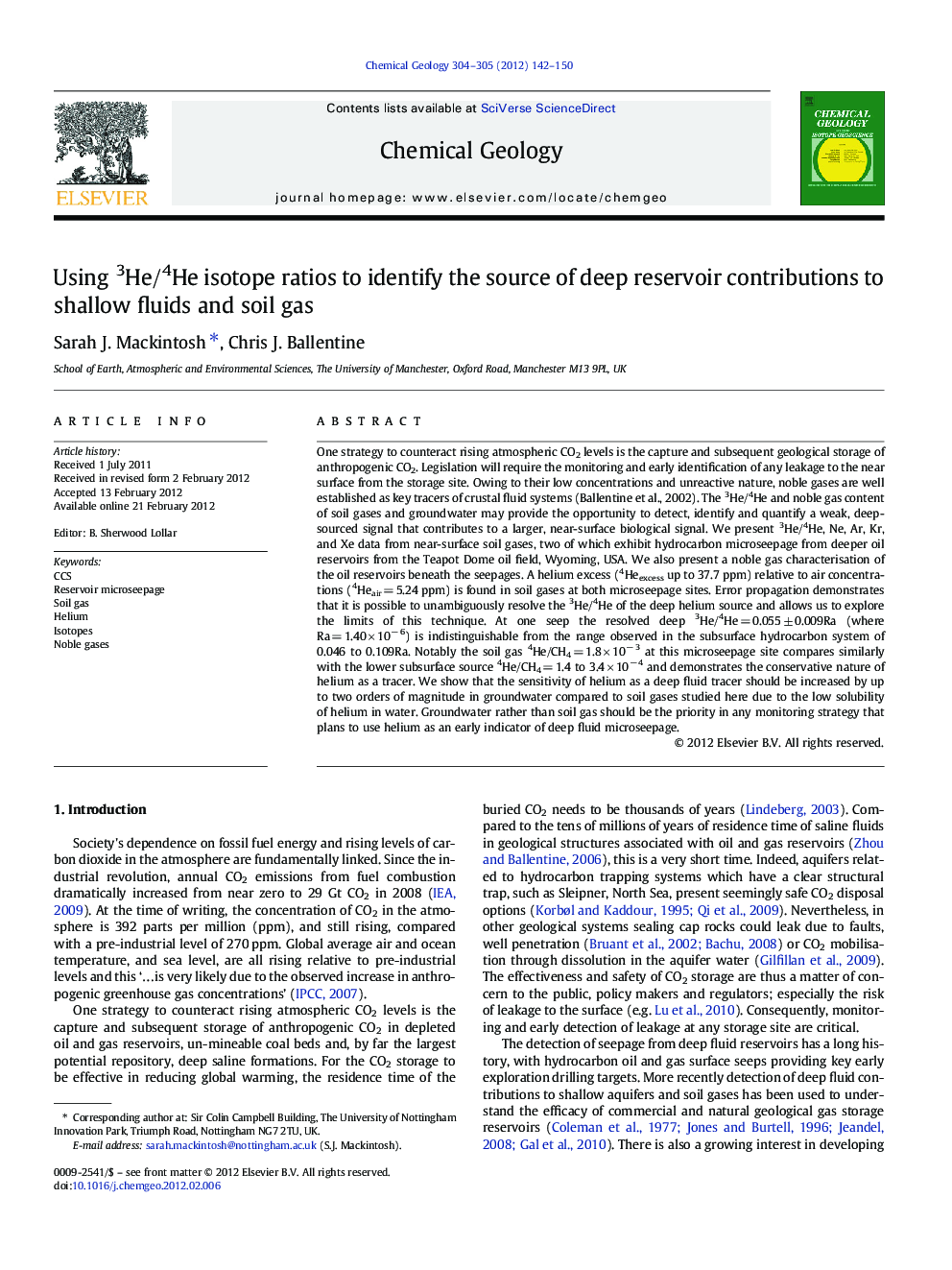| کد مقاله | کد نشریه | سال انتشار | مقاله انگلیسی | نسخه تمام متن |
|---|---|---|---|---|
| 4699465 | 1637648 | 2012 | 9 صفحه PDF | دانلود رایگان |

One strategy to counteract rising atmospheric CO2 levels is the capture and subsequent geological storage of anthropogenic CO2. Legislation will require the monitoring and early identification of any leakage to the near surface from the storage site. Owing to their low concentrations and unreactive nature, noble gases are well established as key tracers of crustal fluid systems (Ballentine et al., 2002). The 3He/4He and noble gas content of soil gases and groundwater may provide the opportunity to detect, identify and quantify a weak, deep-sourced signal that contributes to a larger, near-surface biological signal. We present 3He/4He, Ne, Ar, Kr, and Xe data from near-surface soil gases, two of which exhibit hydrocarbon microseepage from deeper oil reservoirs from the Teapot Dome oil field, Wyoming, USA. We also present a noble gas characterisation of the oil reservoirs beneath the seepages. A helium excess (4Heexcess up to 37.7 ppm) relative to air concentrations (4Heair = 5.24 ppm) is found in soil gases at both microseepage sites. Error propagation demonstrates that it is possible to unambiguously resolve the 3He/4He of the deep helium source and allows us to explore the limits of this technique. At one seep the resolved deep 3He/4He = 0.055 ± 0.009Ra (where Ra = 1.40 × 10− 6) is indistinguishable from the range observed in the subsurface hydrocarbon system of 0.046 to 0.109Ra. Notably the soil gas 4He/CH4 = 1.8 × 10− 3 at this microseepage site compares similarly with the lower subsurface source 4He/CH4 = 1.4 to 3.4 × 10− 4 and demonstrates the conservative nature of helium as a tracer. We show that the sensitivity of helium as a deep fluid tracer should be increased by up to two orders of magnitude in groundwater compared to soil gases studied here due to the low solubility of helium in water. Groundwater rather than soil gas should be the priority in any monitoring strategy that plans to use helium as an early indicator of deep fluid microseepage.
► Teapot Dome is a potential site for CO2 sequestration pilot studies.
► The concentration and isotopic composition of noble gases provide a baseline.
► The 3He/4He data shows a uniform signal across the breadth and depth of Teapot.
► The 3He/4He data is used to show microseepage from the reservoir in soil gases.
► Spike addition in CO2 provides information about the interaction of injected CO2.
Journal: Chemical Geology - Volumes 304–305, 18 April 2012, Pages 142–150